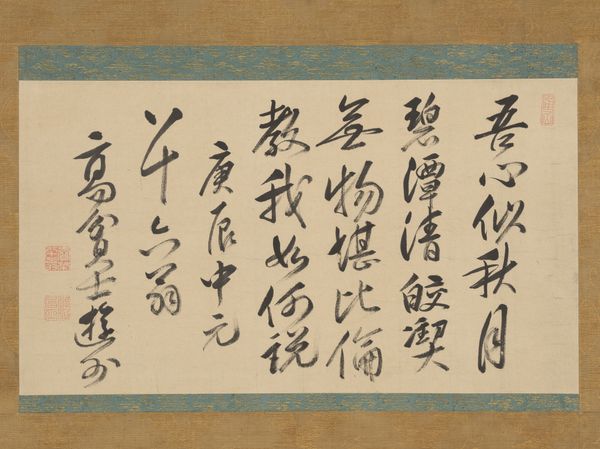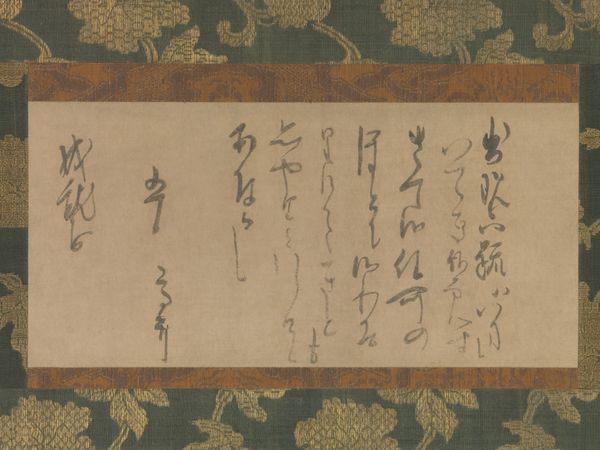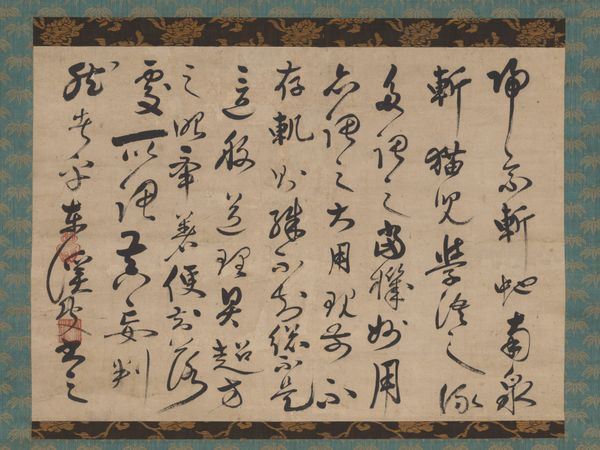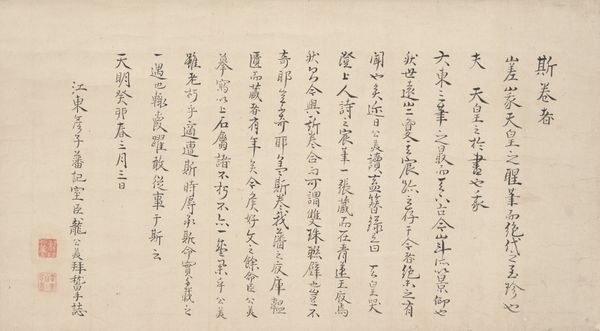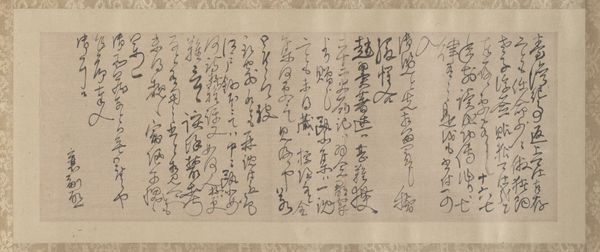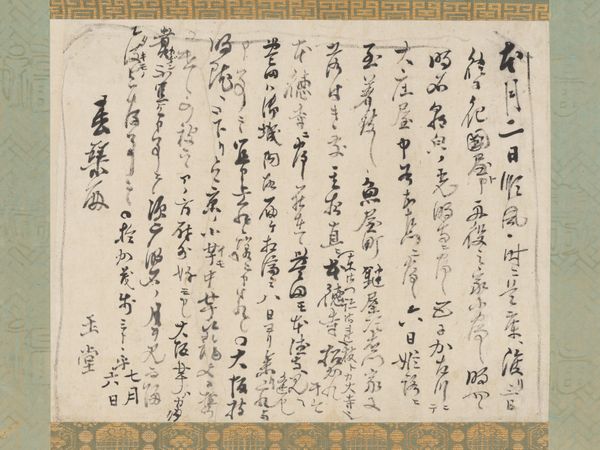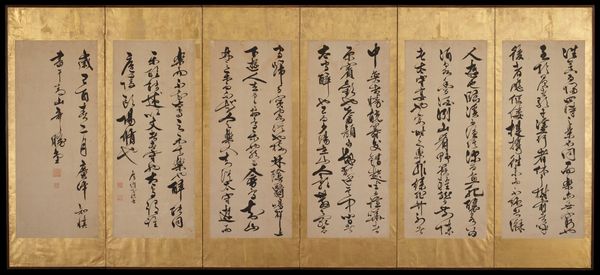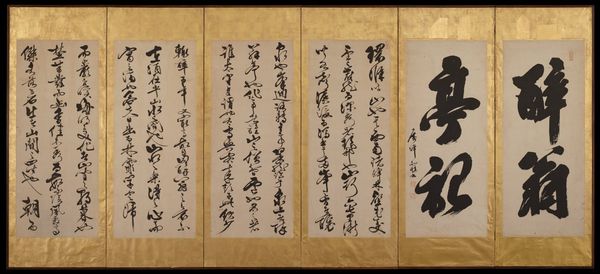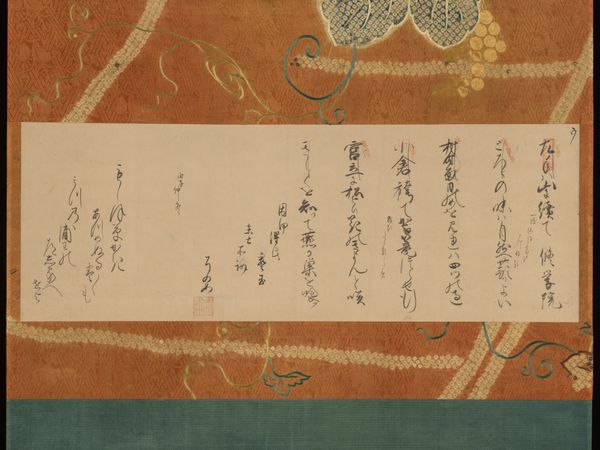
Record of a haiku exchange on kaishi writing paper 1650 - 1694
0:00
0:00
drawing, tempera, textile, paper, ink, mural, pendant
#
drawing
#
medieval
#
tempera
#
linocut
#
asian-art
#
textile
#
perspective
#
paper
#
form
#
ink
#
linocut print
#
orientalism
#
abstraction
#
line
#
mural
#
yamato-e
#
calligraphy
#
pendant
Dimensions: Image: 11 5/16 × 18 3/8 in. (28.7 × 46.7 cm) Overall with mounting: 44 7/8 × 19 1/4 in. (114 × 48.9 cm) Overall with knobs: 44 7/8 × 21 1/4 in. (114 × 54 cm)
Copyright: Public Domain
Editor: This is a scroll, "Record of a haiku exchange on kaishi writing paper," made between 1650 and 1694 by Matsuo Bashō. It's made with ink on paper, and what strikes me most is how the elegant calligraphy dances across the page. What do you see when you look at this piece? Curator: Well, let’s think about the materials. Paper in 17th-century Japan wasn’t just a surface; its production was a craft deeply interwoven with the social and economic structures of the time. The type of paper used, the ink, the brushes—these all speak to the status and access Bashō and his circle had to these materials. It makes you wonder about the labor involved in producing such refined materials. Editor: That's fascinating. So the very materials themselves tell a story about social class and craftsmanship? How does the act of writing the haiku factor in? Curator: Exactly. The act of calligraphy wasn't just artistic expression; it was a highly disciplined skill. The kaishi paper itself would have been specifically made for this kind of ephemeral use— carrying poetry, which was traded then disposed of. I'm wondering about the performative aspect of writing haiku. Was the creation of this piece meant for display, or was it meant for an exchange with a specific audience and the record-keeping of the exchange became this hanging scroll? Editor: It’s interesting to think about how something so seemingly simple as a haiku exchange could be so layered with meaning. Curator: Indeed. We can appreciate the skill, but by considering the social and material circumstances, we can begin to understand it more deeply. This brings us to a consideration of what "high art" and "craft" signify when labor is involved. It blurs these traditional categories, prompting a more nuanced interpretation of this scroll. What are your thoughts now? Editor: I see it as less about the artist's individual genius, and more about this network of production and exchange that the artwork embodies. It makes me appreciate it on a whole other level! Curator: Precisely! Looking at art through the lens of its materiality truly changes how we understand its value.
Comments
No comments
Be the first to comment and join the conversation on the ultimate creative platform.

